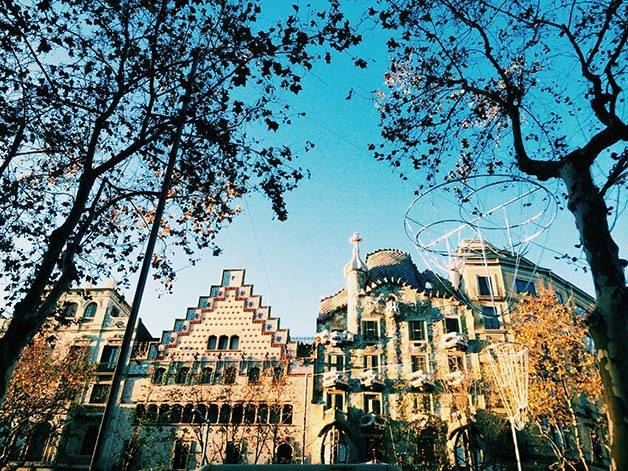5 popular myths about Barcelona

Here at Top Tips, one of our main aims is to help you experience Barcelona in the best possible conditions, avoiding the usual tourist traps. In this article, we want to debunk some of the most widespread myths concerning the Catalan capital to let the real, authentic city shine through.
Myth nº1: Barcelona is fundamentally Spanish
From the outside, the situation in Catalonia can appear puzzling. The Catalans are sometimes compared to Basque or Corsican independentists, and the Catalan language is often seen as a simple local dialect. The reality is very different.
Spain is a highly decentralised country, where each region (or autonomous community) has a considerable amount of power. The regional specificities of Catalonia are governed by local laws, proposed by the Generalitat (the Catalan government) and voted on by the local assembly.
In the rest of Spain (with the exception of the Basque country), the differences between autonomous communities are relatively small. Catalonia, however, is different. The Generalitat has the power and the legislative means of establishing and imposing Catalan culture across the territory.
As you explore Barcelona, you’ll see that Catalan is far from being “just” a dialect: it’s used by everybody on a daily basis in any and every situation, and is found everywhere, from administrative documents to signposts. Teaching in schools is given in Catalan, except in international extablishments, where Catalan lessons remain compulsory.
That said, if you’re coming to Barcelona to live and you only speak Spanish, it shouldn’t be a problem, as bilingualism is enshrined in national law. In “real” terms, this means that all administrative procedures can be accomplished in Spanish OR in Catalan.

Myth nº2: Flamenco is typically local
Flamenco is one of the symbols of Spanish culture, alongside the corrida and paëlla. In reality, though, it’s from Andalucia. The Catalan regional dance is the sardane, which is rather more sedate! You won’t be able to see a sardane show, per se, but you may be able to catch the locals dancing it on Sundays in front of the cathedral, or during cultural events such as the festes majors.
Even though it’s not local, if you want to see flamenco in Barcelona, there are plenty of shows on offer. Since the fall of Franco, flamenco is generally “accepted” in Catalonia, and some of the stars of the genre, including Carmen Amaya, are from Barcelona.
- See our article Flamenco shows in Barcelona for more details.
Myth nº3: eating on Las Ramblas is an “authentic” experience
Many tourist guides attempt to pass Las Ramblas off as a truly “authentic” street. That may have been true a few decades ago, but it’s certainly not the case any more!
Mass tourism has led to the disappearance of typical restaurants and the emergence of tourist traps. Prices are generally high, and the food is rarely good. One to avoid! Instead, take a look at our list of great places to eat around Las Ramblas.
Whilst the restaurants on Las Ramblas are best avoided, the avenue still forms an essential part of any tour of Barcelona. Plan ahead and read our guide to must-sees and must-avoids here.
Myth nº4: architecture in Barcelona started and ended with Gaudí
Gaudí’s work is so impressive that he’s often credited with single-handedly forging Barcelona’s architectural identity. Not so! The city is packed with superb edifices created by talented architects from a whole range of periods and styles.
Catalan art nouveau (known as modernism) owes much to Lluís Domènech i Montaner, Antoni Gaudí’s teacher and mentor. He was responsible for the Palau de la Música, the Sant Pau Hospital and the Casa Lleo i Morera. Another major figure from the same period was Puig i Cadafalch, the brains behind the Casa Amatller (neighbour to Casa Batlló), Poble Espanyol and the Casa de les Puntxes on Avigunda Diagonal.
Barcelona’s architectural heritage isn’t limited to modernism, either, and some great contemporary architects have worked to ensure that the city remains a hotbed of avant-garde innovation. See for yourself by reading our article on contemporary architecture in Barcelona.

Myth nº5: Spring is the best time to visit Barcelona
Barcelona’s mediterranean climate is particularly enjoyable, and many feel that springtime is the best moment to visit. Yes, the weather in April and May can be fabulous, but it’s also pretty unpredictable – full sun one day, bucketing rain the next.
Whilst we have nothing against visiting Barcelona in the spring, the winter is another fantastic option, as it’s usually very sunny, and there are far fewer tourists than during the other seasons of the year. Alternatively, visit in summer to make the most of the heat, the beach and the city’s many terraces. Finally, if you choose to visit in autumn, note that the weather is still hot in October, and the beaches are nearly as busy as they are in July!
- Take a look at our article Which is the best season for visiting Barcelona? and the one on weather in Barcelona before you decide when to visit.
